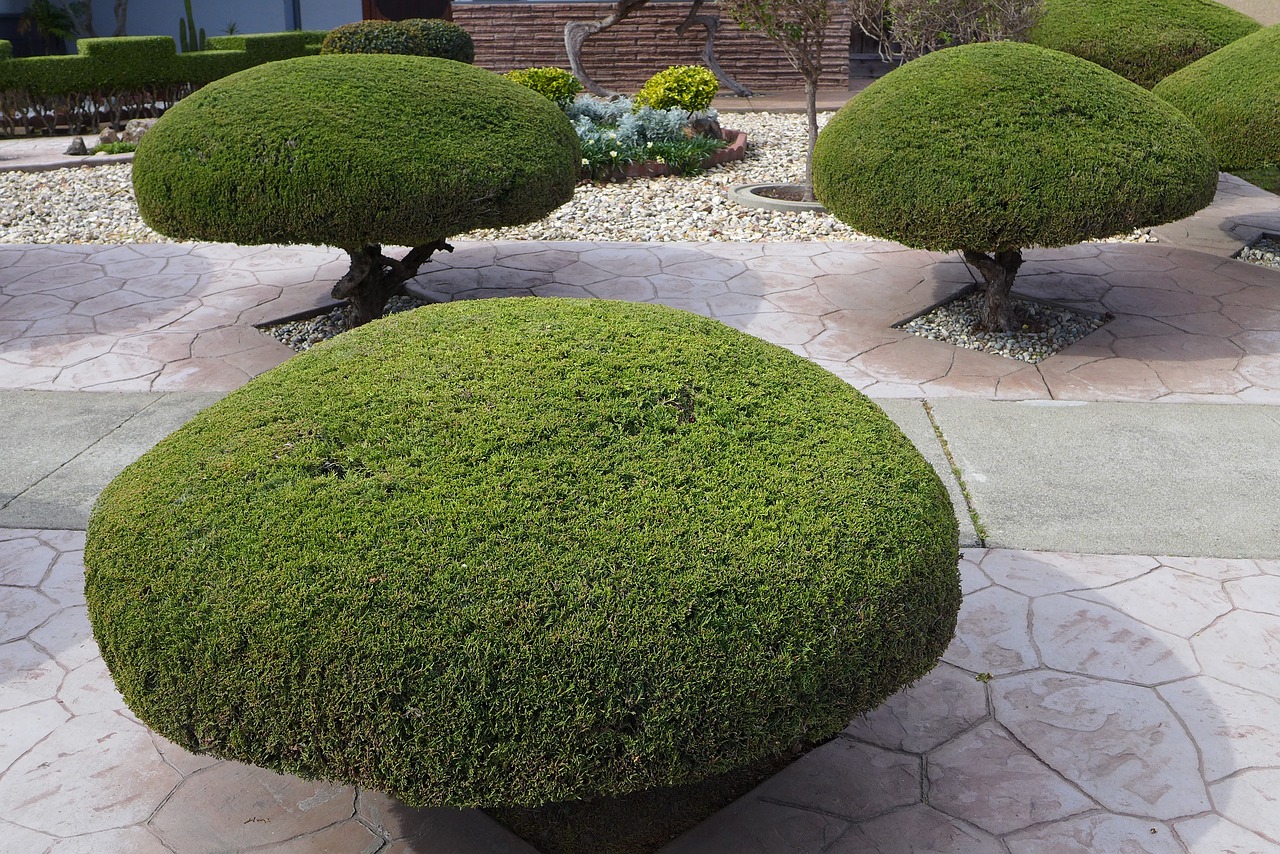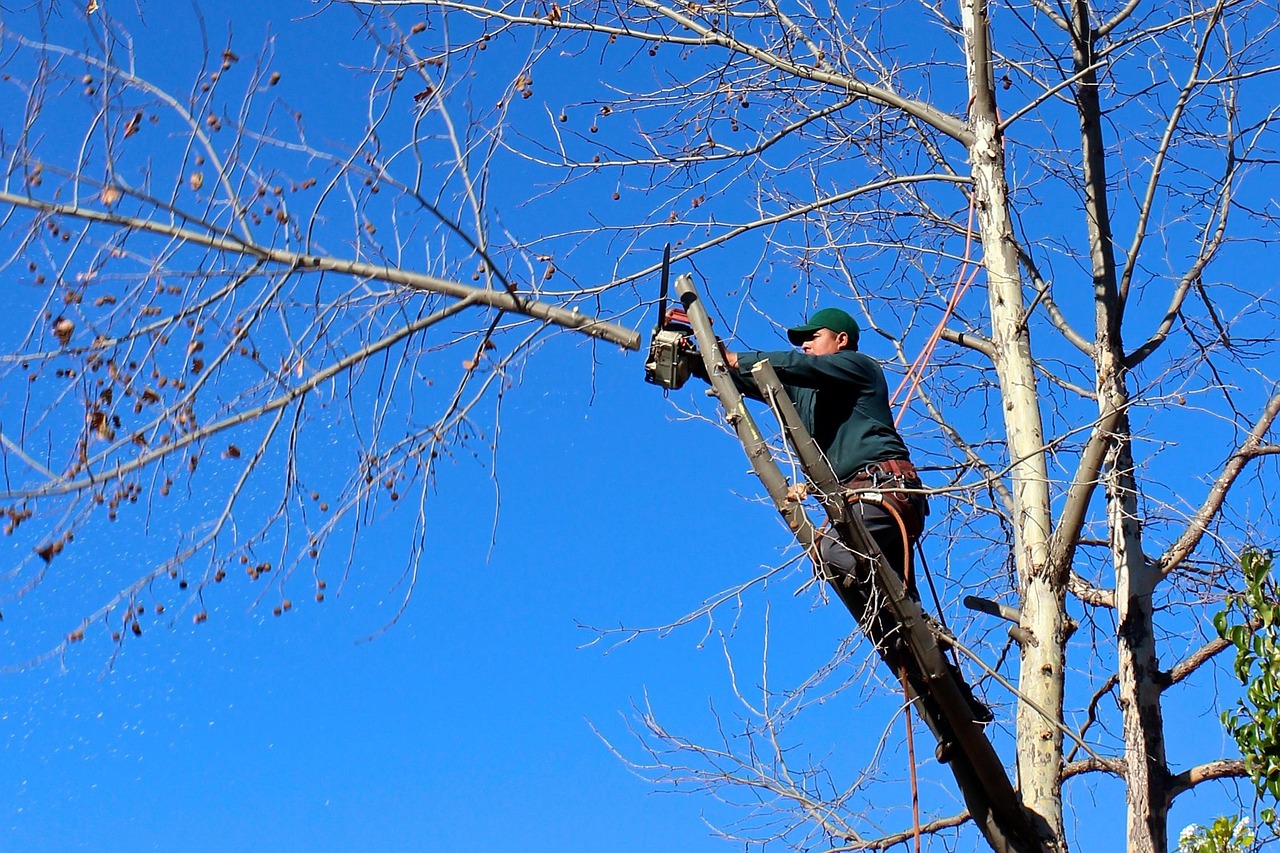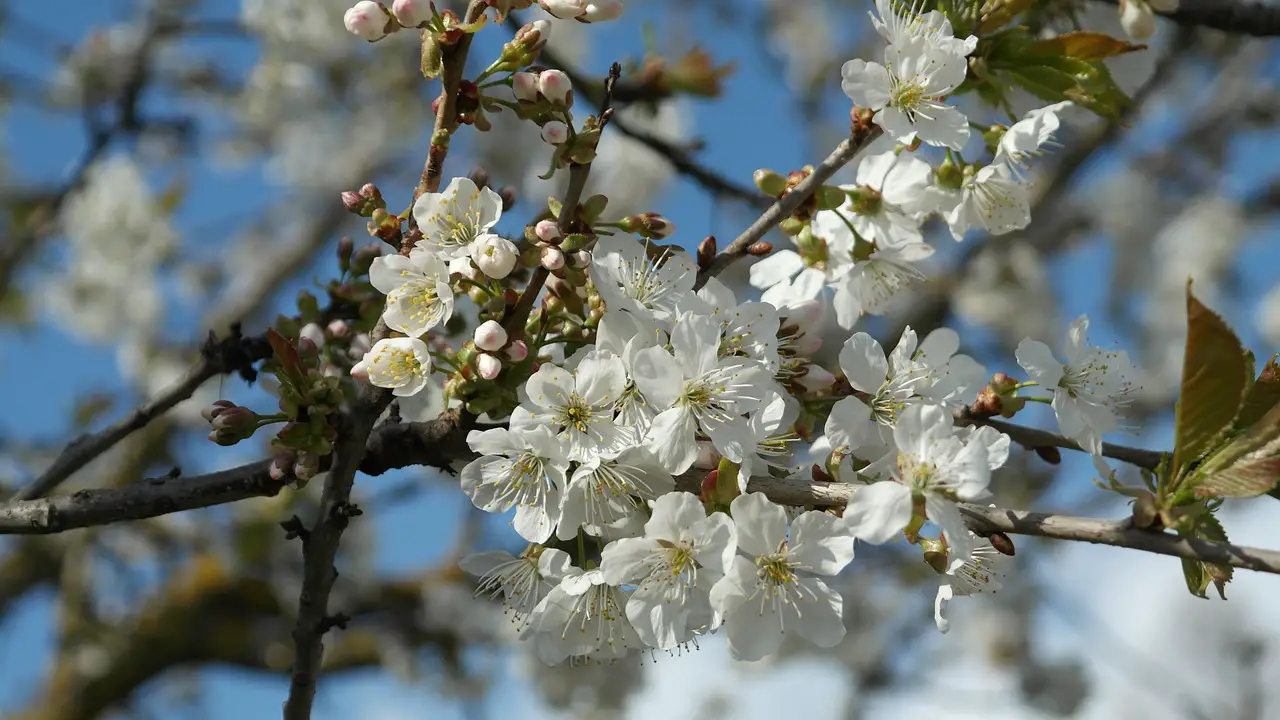Trimming a tree is essential for its healthy growth and care because it promotes better air circulation, removes dead or diseased branches, and encourages strong structural development. Regular trimming enhances the tree’s overall health, appearance, and safety.
Trees play a vital role in our environment. They provide shade, improve air quality, and enhance the beauty of landscapes. However, to maintain their health and longevity, proper care is necessary. One of the most critical aspects of tree care is trimming. This practice not only helps trees grow better but also prevents a range of potential issues that can arise from neglect.

When trees are trimmed correctly, they benefit in numerous ways. This process involves the selective removal of branches to improve a tree’s structure and aesthetic appeal. Each trim serves a purpose. Whether it is to foster new growth or to remove hazards, trimming is crucial.
The Benefits of Trimming Trees
Understanding the benefits of trimming helps in recognizing its importance. Here are some of the key advantages:
- Promotes Healthy Growth: Regular trimming encourages new growth by allowing sunlight to penetrate and reach the inner branches.
- Enhances Air Circulation: Properly spaced branches improve airflow, reducing the risk of diseases caused by stagnant moisture.
- Removes Dead or Diseased Wood: Trimming helps eliminate dead or diseased branches that can spread infections to healthy parts of the tree.
- Improves Safety: Removing weak or low-hanging branches reduces the risk of accidents, especially during storms or high winds.
- Increases Aesthetic Appeal: A well-trimmed tree looks healthier and more attractive, enhancing the overall landscape.
Each of these benefits contributes to the long-term health and stability of trees. Regular maintenance through trimming can prevent more significant issues down the line, potentially saving time and money for property owners.

Understanding Tree Growth
To grasp why trimming is so beneficial, it is essential to understand how trees grow. Trees grow from their tips, with new shoots developing at the ends of branches. When trees are not trimmed, they can become overgrown and unbalanced. This imbalance can lead to various problems, including weakened branches that are more susceptible to breakage and disease.
During the growth process, a tree allocates resources such as water and nutrients to its branches. If some branches are dead or unhealthy, the tree wastes valuable resources that could be directed toward healthier growth. By trimming these branches, you help the tree focus its energy on new growth instead of struggling to support unhealthy parts.
Best Practices for Trimming Trees
Trimming trees involves specific techniques to ensure that the tree remains healthy post-trim. Here are some best practices to consider:

- Use Clean Tools: Always use sharp and clean pruning shears or saws to make clean cuts.
- Trim at the Right Time: The best time to trim most trees is during late winter or early spring before new growth begins.
- Avoid Over-Trimming: Only remove what is necessary. Over-trimming can stress the tree and inhibit its growth.
- Follow Proper Techniques: Use the three-cut method for larger branches to prevent bark tearing.
By following these guidelines, you can ensure that your tree will thrive after trimming. Proper techniques will promote healthy growth and minimize the risk of damage to the tree.
The Role of Professional Arborists
For those unfamiliar with tree care, hiring a professional arborist can be beneficial. Arborists have specialized training in tree biology and maintenance. They are equipped to assess tree health accurately and provide recommendations tailored to specific needs. A professional can also identify signs of disease that may go unnoticed by an untrained eye.
Investing in professional tree care ensures that your trees receive the best treatment possible. This investment pays off in healthier, more resilient trees that enhance your property’s value.

Common Tree Trimming Mistakes
While trimming is essential for tree health, it is equally important to avoid common mistakes that can lead to improper care. Here are some frequent errors to watch out for:
- Trimming at the Wrong Time: Many people trim their trees at the wrong season. Pruning during the wrong time can lead to sap loss and stress. It is crucial to know the right time for each type of tree.
- Ignoring Tree Species: Different trees have different needs. Failing to consider the species can result in incorrect techniques or timing.
- Over-Pruning: Removing too much foliage can shock the tree and hinder its growth. It is essential to maintain a balance.
- Improper Cuts: Making cuts incorrectly can cause injury to the tree, leading to disease and decay. Learning proper cutting techniques is vital.
Avoiding these mistakes will contribute to a healthier tree and ensure that the trimming process is effective.
Signs Your Tree Needs Trimming
Knowing when to trim your trees is crucial for maintaining their health. Here are some signs that indicate a tree may need trimming:
- Excessive Growth: If branches are growing excessively and becoming overcrowded, it is time for a trim.
- Dead or Dying Branches: Any branch that appears dead or diseased should be removed immediately to prevent spreading issues.
- Branches Touching Structures: If branches are touching roofs, power lines, or other structures, it’s essential to trim them back to prevent damage.
- Pest Infestation: Signs of pests or insects on branches may indicate that trimming is necessary to protect the overall health of the tree.
Being aware of these signs will help you take timely action, ensuring your trees remain healthy and well-maintained.
Seasonal Considerations for Trimming
The timing of tree trimming can significantly affect the outcomes. Different seasons present different opportunities and challenges. Below is a brief overview of how seasonal changes impact tree care:
| Season | Recommended Actions | Considerations |
|---|---|---|
| Spring | Best time for light trimming and shaping. | Avoid heavy pruning as sap flow begins. |
| Summer | Ideal for removing dead or diseased branches. | Monitor for signs of stress; avoid major cuts. |
| Fall | Time for preparing trees for winter; light trimming only. | Avoid heavy pruning close to winter. |
| Winter | Best time for major pruning of dormant trees. | Cold temperatures can affect cuts; be cautious of weather conditions. |
This table highlights the seasonal guidelines for effective tree trimming. Each season presents unique opportunities, and understanding them can lead to healthier trees.
The Impact of Climate on Tree Health
The climate plays a significant role in the health of trees, influencing their growth patterns and care requirements. Trees in different climates may require varying trimming techniques. Here are some factors to consider:
- Temperature Extremes: Trees in areas with high temperatures may require more frequent trimming to promote airflow and reduce heat stress.
- Rainfall Levels: In regions with heavy rainfall, it’s essential to trim trees to reduce the risk of fungal diseases that thrive in moist conditions.
- Wind Exposure: Trees in windy areas may need structural trimming to strengthen their shape and reduce wind resistance.
Adjusting trimming practices based on climate conditions will help ensure that trees remain robust and healthy throughout their lives.
The Importance of Tree Health Assessments
Regular health assessments of trees can help identify issues early. Professional arborists use various methods to evaluate tree health, including:
- Visual Inspections: Arborists examine trees for signs of disease, pest infestation, and structural integrity.
- Soil Testing: Analyzing soil quality can reveal nutrient deficiencies affecting tree health.
- Growth Patterns: Assessing growth patterns helps determine if a tree is thriving or struggling.
Regular assessments not only help in timely trimming but also inform other care practices that support tree health. By prioritizing tree health assessments, you can ensure that your trees receive the best possible care throughout their lives.
Seasonal Tree Care Beyond Trimming
While trimming is a critical aspect of tree care, it is not the only task that needs attention throughout the year. Seasonal care routines can optimize the health of trees, ensuring they remain vigorous and resilient. Here are some additional care practices to incorporate into your seasonal tree maintenance:
Spring Care
As trees awaken from dormancy, they require specific care to support new growth. Key activities during spring include:
- Fertilization: Applying a balanced fertilizer can help replenish nutrients lost during winter.
- Pest Control: Monitoring for pests is vital. Early intervention can prevent infestations from spreading.
- Mulching: Adding mulch around the base of trees conserves moisture and suppresses weeds.
These actions set the stage for healthy growth as trees enter their active growing season.
Summer Care
During the summer months, trees are in full bloom and require ongoing attention. Consider these practices:
- Watering: Ensure trees receive adequate water, especially during dry spells. Deep watering is essential for root development.
- Monitoring Growth: Keep an eye on growth patterns and adjust your trimming schedule if necessary.
- Weed Control: Weeds can compete with trees for nutrients and water, so regular removal is important.
Healthy summer care practices support trees in coping with heat and stress.
Fall Care
As trees prepare for winter, fall care becomes crucial. Important activities include:
- Final Trimming: Conduct any necessary trimming before the trees go dormant. This helps prevent injuries during winter storms.
- Soil Testing: Assess soil health to identify any nutrient deficiencies that need addressing before winter.
- Protecting Roots: Consider adding mulch to protect roots from freezing temperatures.
Proper fall care ensures that trees are well-prepared for the challenges of winter.
Winter Care
During winter, tree care focuses on protection and preventive measures. Activities to consider include:
- Inspecting Trees: Regularly check for damage caused by snow or ice accumulation on branches.
- Avoiding Heavy Loads: If heavy snow accumulates on branches, gently removing it can prevent breakage.
- Planning for Spring: Use this time to plan future trimming and care tasks for the upcoming growing season.
Caring for trees in winter is essential for minimizing damage and preparing them for rejuvenation in spring.
The Role of Fertilization in Tree Health
Fertilization plays a significant role in maintaining tree health, particularly when combined with trimming practices. It provides essential nutrients that support growth and recovery. Understanding how and when to fertilize is crucial:
Types of Fertilizers
There are two primary types of fertilizers to consider for tree health:
- Granular Fertilizers: These provide a slow release of nutrients over time. They are ideal for established trees.
- Liquid Fertilizers: These offer immediate nutrient uptake, making them suitable for young or newly planted trees in need of quick nourishment.
When to Fertilize
The timing of fertilization is important for maximizing benefits. Here are general guidelines:
- Spring Application: Fertilizing in early spring supports new growth and prepares trees for the active season.
- Post-Trimming Fertilization: After trimming, applying fertilizer can help trees recover and stimulate new growth.
Signs of Nutrient Deficiency
Recognizing signs of nutrient deficiencies can help determine when fertilization is necessary. Common symptoms include:
- Pale Leaves: Yellowing leaves may indicate a lack of nitrogen.
- Poor Growth: Stunted growth can suggest a deficiency in phosphorus or potassium.
- Brittle Branches: Weak branches may be a sign of inadequate nutrients essential for structural integrity.
Taking action based on these signs ensures that your trees receive the nutrients they need to thrive.
Pest and Disease Management
Pest and disease management is integral to tree care. Early detection and treatment can significantly improve tree health and longevity. Here are strategies for effective management:
Pest Identification
Understanding common tree pests is crucial for timely interventions. Some common pests include:
- Aphids: Small insects that suck sap from leaves, leading to leaf curling.
- Borers: Larvae that tunnel into wood, causing structural damage.
- Spider Mites: Tiny arachnids that create webbing and cause leaf discoloration.
Disease Recognition
Diseases can also affect tree health. Recognizing symptoms can help prevent the spread. Common diseases include:
- Canker Diseases: These create sunken areas on bark, leading to branch dieback.
- Root Rot: Caused by overwatering or poor drainage, leading to tree decline.
- Powdery Mildew: A fungal disease causing a white powdery coating on leaves.
A comprehensive approach that includes timely trimming will support effective pest and disease management, promoting overall tree health.
Importance of Community Engagement in Tree Care
Community involvement plays a vital role in the health and care of trees. By fostering a culture of tree stewardship, communities can enhance their local environment and promote overall well-being. Here are some ways communities can engage in tree care:
- Tree Planting Events: Organizing community tree planting days encourages residents to contribute to their local environment while learning about the importance of trees.
- Educational Workshops: Hosting workshops on tree care, pruning techniques, and pest management can empower residents with knowledge to care for trees effectively.
- Local Arborist Partnerships: Collaborating with local arborists can provide expertise for community projects and help identify areas in need of attention.
Engaging the community not only strengthens bonds among residents but also promotes awareness of the significant role trees play in local ecosystems.
Utilizing Technology for Tree Monitoring
Advancements in technology can greatly enhance tree care practices. Utilizing various tools and methods can help monitor tree health effectively. Here are some examples:
- Mobile Apps: There are several applications available that help identify tree species, diseases, and pests. These tools provide an easy way for homeowners to assess their trees.
- Drones: Drones can be used for aerial surveys of large areas, allowing for quick assessments of tree health and identifying issues that may not be visible from the ground.
- Soil Sensors: Soil moisture sensors help homeowners understand when to water their trees, optimizing irrigation and reducing water waste.
Incorporating technology into tree care practices allows for more precise monitoring and management, ultimately leading to healthier trees.
The Role of Trees in Urban Environments
Trees are not just essential for rural landscapes; they play a significant role in urban environments as well. In cities, trees contribute to:
- Improving Air Quality: Trees filter pollutants from the air, providing cleaner air for residents.
- Reducing Heat Island Effect: Urban areas often experience higher temperatures due to concrete and asphalt. Trees provide shade, lowering surface temperatures and improving comfort.
- Enhancing Property Values: Well-maintained trees increase property values, making neighborhoods more desirable.
Recognizing the benefits of trees in urban settings emphasizes the importance of ongoing care and maintenance.
Final Thoughts
Trimming trees is a fundamental practice essential for maintaining their health and promoting optimal growth. Through regular trimming, we can encourage better air circulation, prevent disease spread, and enhance the aesthetic appeal of our landscapes. Moreover, integrating seasonal care practices, recognizing signs of distress, and utilizing technology significantly improve tree management.
Moreover, community engagement in tree care fosters a sense of responsibility toward the environment. Educating residents about the significance of trees ensures that future generations appreciate and protect these vital resources. By combining professional expertise with community efforts, we can create healthier and more sustainable urban and rural environments.
Ultimately, the importance of trimming trees extends beyond aesthetics; it is a vital part of ensuring that our natural surroundings thrive. As we continue to invest time and resources into tree care, we contribute not only to the beauty of our landscapes but also to the overall health of our planet.
